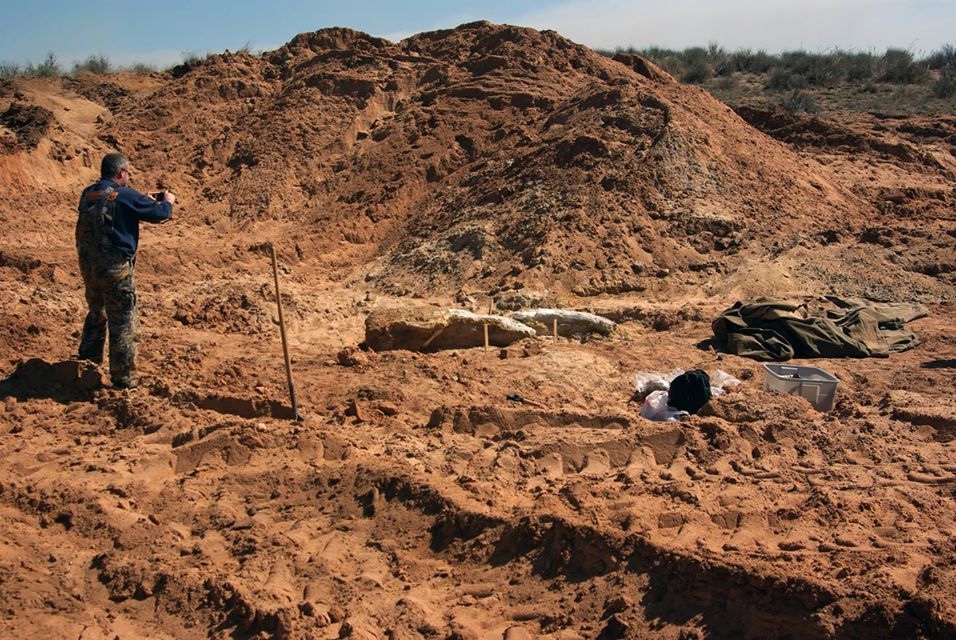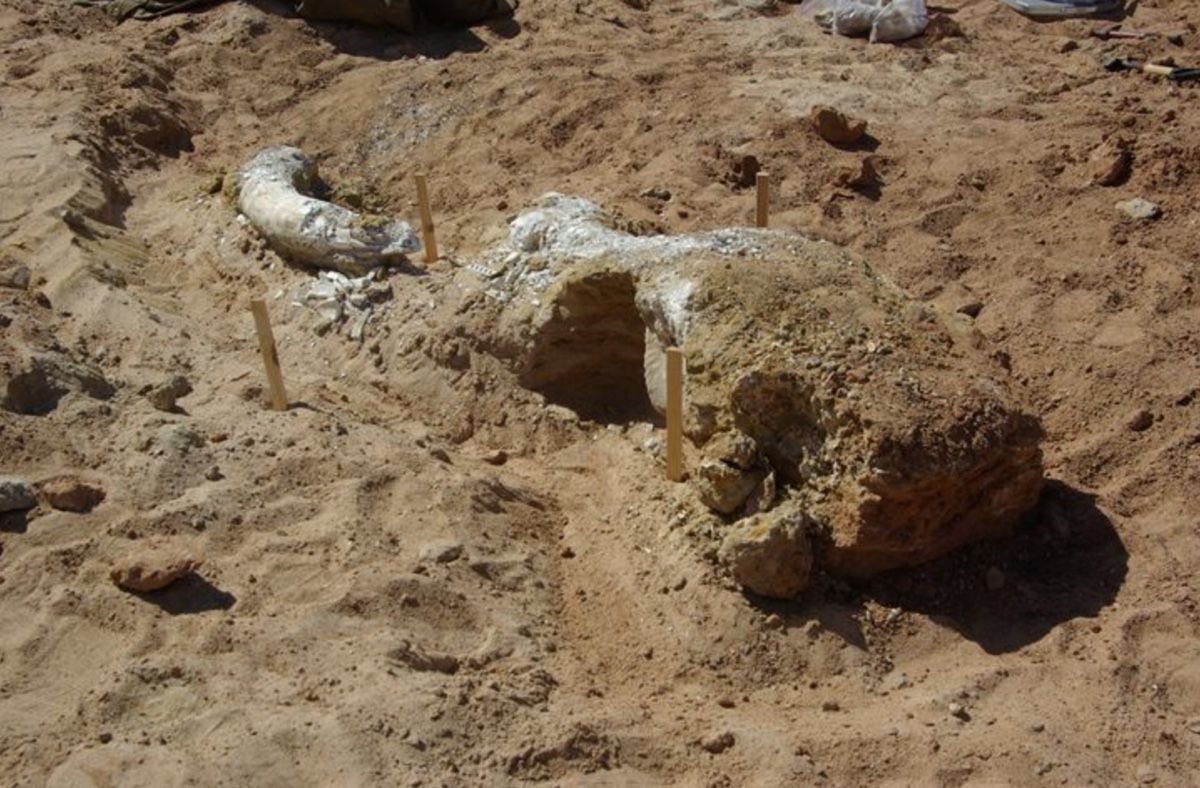Giant Mammoth Skull Discovered by Bulldozer Operator

A bulldozer operator at a sand pit in northwestern Oklahoma got quite a surprise this month when he spotted a huge skull that belonged to a Columbian mammoth.
These giants were plentiful across the plains of Oklahoma during the Pleistocene epoch, which lasted from about 1.8 million to 11,700 years ago, said Leland Bement of the Oklahoma Archaeological Survey.
The discovery was not unheard of, as the Survey typically receives about three "mammoth-sighting" calls a year, Bement said. That made it now less exciting, though. "Archaeological fieldwork is always exciting. You never know what you are going to find," Bement told Live Science in an email.
He added, "When it comes to mammoth finds, we are always on the lookout for the next one that has projectile points or stone tools associated with it to indicate that the animal was killed and butchered. We have so few of these sites across North America and only one so far in Oklahoma." [Photos: A 40,000-Year-Old Mammoth Autopsy]

The skull had been deposited on the sandbar of a river channel, the archaeologists said. So far, the archaeologists have unearthed the animal's skull with a single tooth in place; apparently, another tooth had been removed from the skull during the clearing of the sand.
"We don't know the cause of death. There is no sign that people killed or butchered it," Bement told Live Science in an email. "Its skull was washed around in the river. The rest of the animal could be anywhere."
Though the scientists have not pinpointed an exact age for the skull, they know it’s more than 11,000 years old — the period when mammoths and other megafauna went extinct at the end of the Pleistocene.
Sign up for the Live Science daily newsletter now
Get the world’s most fascinating discoveries delivered straight to your inbox.
Scientists have put forth several reasons for the extinctions, ranging from rapid climate warming to ice age human hunters. Others have suggested a perfect storm of culprits. One group of dwarf mammoths is thought to have survived in the Arctic, on Wrangel Island, until about 3,700 years ago.
Like other Columbian mammoths (Mammuthus columbi), this one was not the cold-adapted type and preferred more temperate stomping grounds in southern and central North America. The woolly mammoth (Mammuthus primigenius), the kind portrayed in the "Ice Age" movies, would have called the chilly tundra home.
The Columbian variety was also much larger than the woollies, with Columbian males reaching up to twice the size of woolly males, according to Hendrik Poinar, an evolutionary geneticist at McMaster University in Hamilton, Canada. Columbian mammoths also arrived in North America about 1.5 million years ago, whereas woolly mammoths stepped onto the continent some 400,000 years ago, said Poinar, who spoke with Live Science in 2011.
Finding mammoth bones, while a mammoth discovery, seems relatively common across the United States. This past January, a construction crew discovered the femur of a mammoth (possibly a Columbian mammoth) under the Oregon State University's football field. Last September, two Michigan farmers found a mammoth's skull and tusks while they were installing a drainage pipe. And, in October 2014, a volunteer "paleontologist" unearthed the skeleton of a mammoth on the banks of a reservoir in Idaho. That skeleton dated back more than 72,000 years, said the scientists involved in the excavation.
Next, the researchers, including Oklahoma State University geographer Carlos Cordova, will analyze the mammoth teeth for particles from plants encased in tartar buildup, Bement said. "That will tell us what the mammoth was eating and also help in reconstructing the environment at the time he lived."
The findings will be included in a broader study, by doctoral student Tom Cox, of the distribution of mammoths in Oklahoma, he added.
Follow us @livescience, Facebook& Google+. Original article on Live Science.
Jeanna Bryner is managing editor of Scientific American. Previously she was editor in chief of Live Science and, prior to that, an editor at Scholastic's Science World magazine. Bryner has an English degree from Salisbury University, a master's degree in biogeochemistry and environmental sciences from the University of Maryland and a graduate science journalism degree from New York University. She has worked as a biologist in Florida, where she monitored wetlands and did field surveys for endangered species, including the gorgeous Florida Scrub Jay. She also received an ocean sciences journalism fellowship from the Woods Hole Oceanographic Institution. She is a firm believer that science is for everyone and that just about everything can be viewed through the lens of science.










